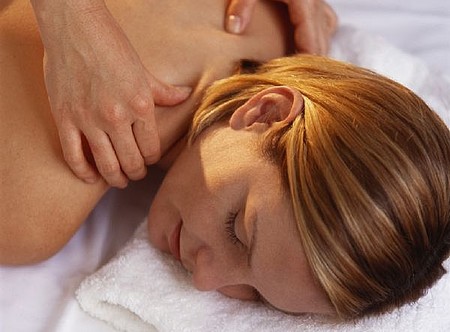Wringing involves a pushing and pulling, twisting movement of the hands in opposite directions, which has the effect of pressing the muscles in between the hands as they move toward each other. It is used after kneading and squeezing stroke when the muscles have been loosened, and is often used to return the hands from one area of the body to another. The strokes are as satisfying to perform as to receive. As the flesh twists, you can almost feel the tension being wrung and drained from the muscles. Wringing is used in a series of continuous movements on fleshy areas, where there is a good bulk of muscle to work with. However, with lighter pressure, it can be used over the arms as well.
The calves
Place both hands over the back of the calf, one hand on the side nearest to you, the other on the far side. Push away from you with your near hand, at the same time pulling back toward you with the other. Twist the muscles as your hands cross and continue the stroke up and down the calf.

The thighs
Place both hands on either side of your partner’s thigh, fingers pointing away from you. Push away from you with one hand, drawing back toward you with the other. Continue the movement as the hands cross, ending up again on opposite sides. Wring firmly over the thigh several times.
The arms
Place your hands on opposite sides of the upper arm. Push away with one hand while pulling back with the other. Continue the wringing movement all the way to the wrist, each movement leading into the next. Your strokes will easily cover the width of the arm and will need to be smaller at the wrist.
The back
Position your hands at either side of the lower back. Slide one hand over toward the centre of the back, while pulling the other in the opposite direction. Use a firm pressure to twist the muscles in the middle. Continue the movement until your hands have reached opposite sides. Now, wring slightly further up and continue the movement up toward the shoulders and then back again.